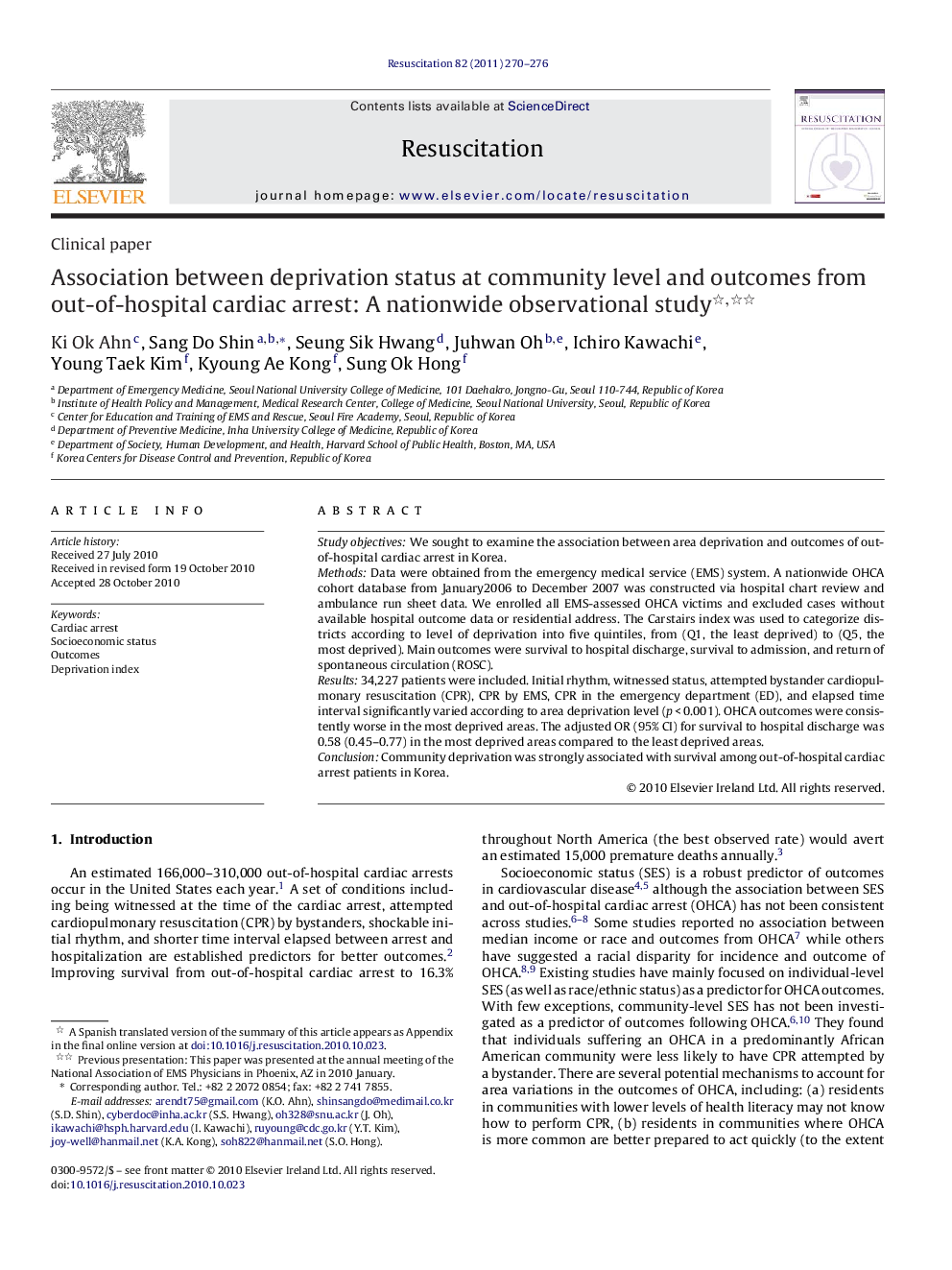| Article ID | Journal | Published Year | Pages | File Type |
|---|---|---|---|---|
| 5999378 | Resuscitation | 2011 | 7 Pages |
Study objectivesWe sought to examine the association between area deprivation and outcomes of out-of-hospital cardiac arrest in Korea.MethodsData were obtained from the emergency medical service (EMS) system. A nationwide OHCA cohort database from January2006 to December 2007 was constructed via hospital chart review and ambulance run sheet data. We enrolled all EMS-assessed OHCA victims and excluded cases without available hospital outcome data or residential address. The Carstairs index was used to categorize districts according to level of deprivation into five quintiles, from (Q1, the least deprived) to (Q5, the most deprived). Main outcomes were survival to hospital discharge, survival to admission, and return of spontaneous circulation (ROSC).Results34,227 patients were included. Initial rhythm, witnessed status, attempted bystander cardiopulmonary resuscitation (CPR), CPR by EMS, CPR in the emergency department (ED), and elapsed time interval significantly varied according to area deprivation level (p < 0.001). OHCA outcomes were consistently worse in the most deprived areas. The adjusted OR (95% CI) for survival to hospital discharge was 0.58 (0.45-0.77) in the most deprived areas compared to the least deprived areas.ConclusionCommunity deprivation was strongly associated with survival among out-of-hospital cardiac arrest patients in Korea.
